


Cleaning your washing machine regularly is an essential part of its maintenance. Over time, dirt, grime, and detergent residue can build up inside the machine, leading to unpleasant odours and even affecting the cleanliness of your clothes. Running a clean cycle not only helps to eliminate these problems but also improves the overall performance and lifespan of your washing machine.
Whether you have a front-loading or top-loading washing machine, the process of running a clean cycle is relatively straightforward. It usually involves using a combination of hot water, vinegar, and baking soda to help loosen and remove any built-up residue. By following a few simple maintenance tips from experts, you can ensure that your washing machine stays clean and in optimal working condition for years to come.
One important step in running a clean cycle is to remove any debris from the machine, such as lint, coins, or small items that may have been left in the pockets of your clothes. This can be done by checking the drum and emptying any remaining contents into a trash bin. Additionally, wiping down the interior of the washing machine with a damp cloth can help remove any visible residue.
Understanding the Importance of Clean Cycles
Regularly running a clean cycle on your washing machine is essential for maintaining its performance and prolonging its lifespan. Here’s why clean cycles are important:
1. Prevents Build-Up
Over time, soap scum, mineral deposits, and bacteria can accumulate in your washing machine. These build-ups can cause unpleasant odors, affect the cleanliness of your clothes, and even damage the internal components of the machine. Running a clean cycle helps to remove these deposits and prevent them from causing any issues.
2. Eliminates Odors
If you’ve noticed a foul smell coming from your washing machine, it’s likely due to bacteria or mold growth. These microorganisms thrive in the moist and warm environment of a washing machine and can cause unpleasant odors that can transfer to your clothes. By running a clean cycle regularly, you can effectively eliminate these odors and keep your machine smelling fresh.
3. Improves Cleaning Performance
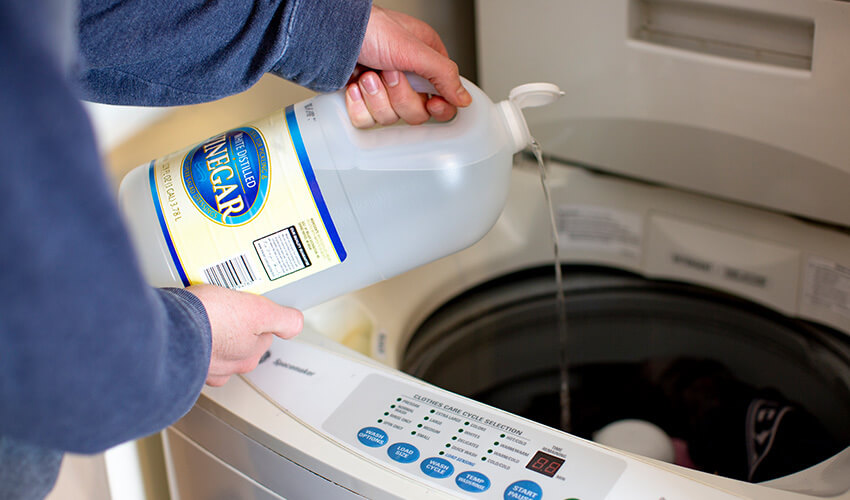
A dirty washing machine may not clean your clothes as effectively as a clean one. Build-ups of dirt, detergent residue, and other debris can hinder the machine’s ability to agitate and rinse your clothes properly. By regularly running a clean cycle, you can ensure that your washing machine is working at its optimum level, resulting in cleaner and fresher clothes.
4. Extends the Lifespan of Your Machine
By taking care of your washing machine through regular clean cycles, you can help extend its lifespan. Build-up of deposits and bacteria can corrode or damage the internal parts of the machine over time, leading to costly repairs or the need for a replacement. By preventing these issues through regular cleaning, you can save money in the long run and enjoy the use of your washing machine for many years.
5. Maintains Warranty Validity
Many washing machine manufacturers require regular maintenance, including clean cycles, to keep the warranty valid. By neglecting to run clean cycles, you may risk voiding the warranty and losing any potential coverage for repairs or replacements. It’s crucial to refer to your washing machine’s manual to understand the maintenance requirements and ensure you’re following them correctly.
Overall, running clean cycles on your washing machine is crucial for maintaining its performance, eliminating odors, improving cleaning results, and extending its lifespan. Make sure to follow the manufacturer’s recommendations for the frequency of clean cycles and use appropriate cleaning products to ensure the best results.
Why Regular Cleaning is Crucial
Regular cleaning of your washing machine is essential for maintaining its performance and longevity. Over time, dirt, grime, and detergent residue can accumulate in various parts of the machine, leading to odors, stains, and even damage. Keeping your washing machine clean not only ensures that your clothes come out fresh and clean every time but also helps prevent potential issues that can arise from a dirty machine.
Benefits of Regular Cleaning:
- Prevents Odors: A dirty washing machine can develop unpleasant odors, which can transfer to your clothes, making them smell musty even after a wash. Regular cleaning helps eliminate these odors, keeping your clothes smelling fresh.
- Removes Stains: Over time, detergent and fabric softener residues can build up on the drum, door seal, and dispensers, leaving behind unsightly stains on your clothes. Cleaning these components regularly prevents the transfer of stains to your garments.
- Prevents Mold and Mildew: Moisture can accumulate in the drum and other parts of the washing machine, providing an ideal environment for mold and mildew growth. Regular cleaning helps prevent the growth of these harmful substances, which can cause health issues and damage to your machine.
- Improves Efficiency: A clean washing machine operates more efficiently, using less water and energy to complete a cycle. By removing dirt and debris from the drum and filters, regular cleaning ensures optimal performance and saves you money on utility bills.
How Often Should You Clean Your Washing Machine?
The frequency of cleaning your washing machine depends on various factors, including usage frequency and water hardness. As a general guideline, it is recommended to clean your machine at least once every three to six months. However, if you notice any signs of odors, stains, or reduced performance, it is advisable to clean your machine sooner.
Tools and Cleaning Agents
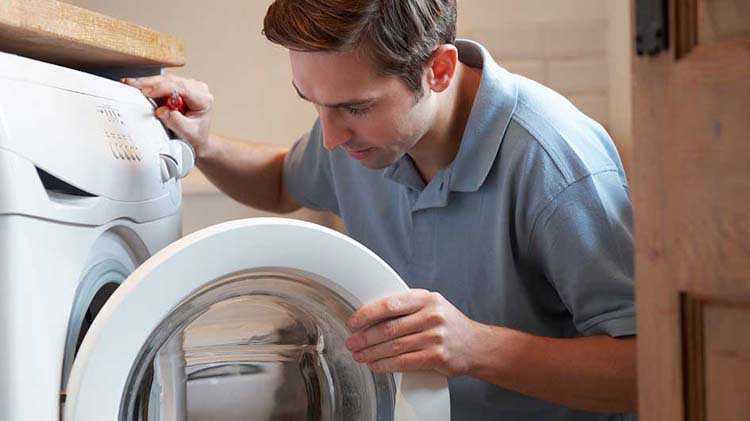
To clean your washing machine effectively, you’ll need the following tools and cleaning agents:
- A cleaning cloth or sponge
- Dish soap or a mild detergent
- Vinegar or a washing machine cleaner
Note: Always refer to your washing machine’s manual for specific cleaning instructions and precautions.
The Benefits of Clean Cycles
Clean cycles are an essential part of maintaining your washing machine’s performance and longevity. By running regular clean cycles, you can enjoy the following benefits:
- Improved Cleaning Efficiency: Over time, dirt, detergent residue, and minerals can build up in your washing machine’s drum and pipes, reducing its cleaning efficiency. By running clean cycles, you can remove these deposits and ensure that your machine is working at its best.
- Elimination of Odors: Without regular cleaning, your washing machine can develop unpleasant odors due to the accumulation of bacteria and molds. Clean cycles help to eliminate these odors, leaving your machine smelling fresh.
- Prevention of Mold and Mildew: Moisture and detergent residue can create an ideal environment for mold and mildew to grow inside your washing machine. Mold and mildew not only cause unpleasant odors but can also stain your clothes. Running clean cycles regularly can prevent the growth of mold and mildew, ensuring that your machine remains clean and hygienic.
- Extended Lifespan: Regular clean cycles help to prevent the buildup of deposits and debris that can lead to clogs and mechanical issues. By keeping your washing machine clean, you can extend its lifespan and reduce the need for costly repairs or replacements.
- Energy Efficiency: A clean washing machine operates more efficiently, which can help reduce utility costs in the long run. With clean cycles, your machine can effectively use water, detergent, and energy, ensuring optimal performance with each wash.
By incorporating clean cycles into your washing machine maintenance routine, you can enjoy improved cleaning results, eliminate odors, prevent mold and mildew growth, extend the lifespan of your machine, and save on energy costs. Make sure to consult your washing machine’s manual for specific instructions on running clean cycles, as different machines may have slightly different procedures.
Step-by-Step Guide to Running a Clean Cycle
Follow these simple steps to effectively run a clean cycle on your washing machine:
- Gather Supplies: Before starting the clean cycle, make sure you have the necessary supplies:
- Vinegar or a washing machine cleaner
- Baking soda
- A cleaning cloth or sponge
- Water
- Empty the Washing Machine: Remove any clothes, towels, or other items from the washing machine.
- Wipe Down the Interior: Use a cleaning cloth or sponge to wipe down the interior of the washing machine, including the drum, door, and any other accessible areas. This will help remove any visible dirt or residue.
- Prepare the Cleaning Solution: Mix equal parts vinegar and water, or follow the instructions on your chosen washing machine cleaner. You can also add baking soda to the mix for extra cleaning power.
- Run the Clean Cycle: Depending on your washing machine model, locate the clean cycle option on the control panel. Select the clean cycle and start the machine. If your machine does not have a designated clean cycle, select the longest and hottest cycle available.
- Add the Cleaning Solution: Once the machine has started, pour the cleaning solution into the detergent dispenser or directly into the drum. Make sure to use the appropriate amount according to the instructions on the cleaner or vinegar bottle.
- Let the Clean Cycle Complete: Allow the machine to run through the entire clean cycle. This usually takes around 1-2 hours. During this time, the cleaning solution will help remove built-up grime and odors from the washing machine.
- Wipe Down the Exterior: While the clean cycle is running, take the opportunity to wipe down the exterior of the washing machine with a cleaning cloth or sponge. Pay attention to the control panel, knobs, and any other surfaces that may have accumulated dirt or spills.
- Rinse the Washing Machine: After the clean cycle is complete, run an additional rinse cycle to remove any remaining cleaning solution. This will ensure that your next load of laundry is not affected by any leftover residue.
- Dry and Reassemble: Once the rinse cycle is finished, use a clean cloth to dry the interior and exterior of the washing machine. Reassemble any removable parts, such as the detergent dispenser or lint filter, if applicable.
Congratulations! You have successfully run a clean cycle on your washing machine. Regularly performing this maintenance task will help extend the lifespan of your machine and ensure that your clothes are always clean and fresh.
Gather the Necessary Supplies
Before starting the clean cycle on your washing machine, it’s important to gather all the necessary supplies. Here are the items you’ll need:
- A mild detergent or washing machine cleaner
- Vinegar or bleach (optional)
- A cleaning cloth or sponge
- A small brush or toothbrush
- A bucket or basin
- Hot water
- A towel for drying
Make sure you have all these supplies readily available before you begin the clean cycle. This will ensure a smooth and efficient cleaning process.
Preparation before Running a Clean Cycle
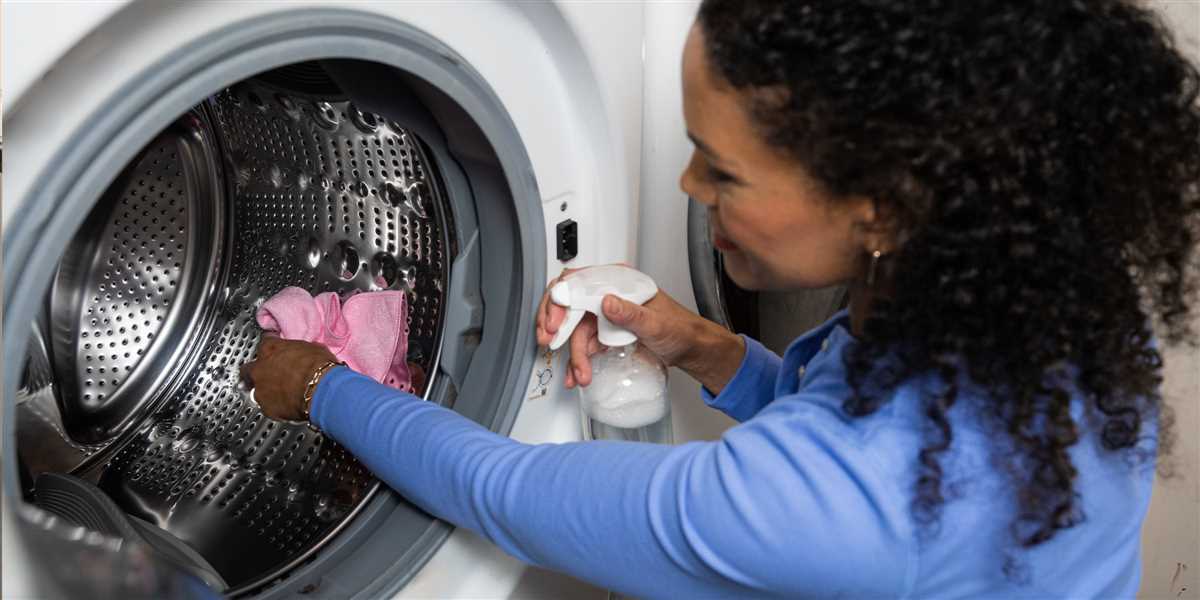
Before running a clean cycle on your washing machine, there are a few necessary preparations you need to make to ensure the process goes smoothly. Follow these expert maintenance tips to get your washing machine ready for a clean cycle:
1. Read the Manual

Start by reading the user manual provided with your washing machine. Different models might have specific instructions or requirements for running a clean cycle. Familiarizing yourself with the manual will ensure you don’t miss any important details.
2. Gather Cleaning Supplies
Next, gather the necessary cleaning supplies. You will need:
- A cleaning agent recommended for washing machines (such as white vinegar or a commercial washing machine cleaner)
- A soft cloth or sponge
- A small brush or old toothbrush
- A bucket or basin
Having all these supplies on hand will make the cleaning process more convenient and efficient.
3. Disconnect the Power
Before starting any maintenance tasks on your washing machine, always disconnect the power. This is crucial for your safety and to avoid any electrical accidents. Unplug the machine from the power outlet or switch off the circuit breaker.
4. Empty the Washing Machine
Make sure the washing machine drum is empty before running a clean cycle. Remove any clothes, towels, or other items that may be inside. Check all pockets to ensure there are no small objects or loose coins that could damage the machine during the cleaning process.
5. Check the Filter
It’s a good idea to check the filter of your washing machine before running a clean cycle. The filter is usually located at the bottom of the machine and can collect lint, hair, and other debris. Clean the filter if necessary to improve the machine’s performance and prevent any blockages.
6. Inspect the Detergent Dispenser
Inspect the detergent dispenser drawer for any buildup or residue. Remove the dispenser drawer and clean it thoroughly using warm water and a mild detergent. Make sure it is completely dry before reinserting it into the machine.
7. Wipe the Interior and Exterior Surfaces
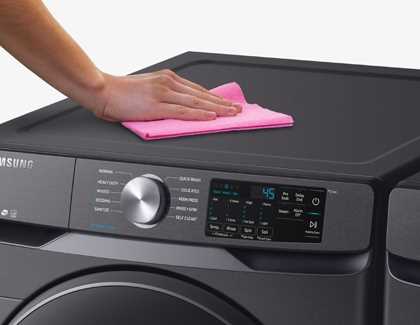
Using a soft cloth or sponge, wipe down the interior and exterior surfaces of the washing machine. Pay close attention to any areas that may have accumulated dirt or grime. For stubborn stains or deposits, a small brush or old toothbrush can be used to scrub gently.
8. Check the Door Seal
Inspect the door seal for any signs of mold, mildew, or residue buildup. Clean the seal using a mixture of water and mild detergent. Be thorough in removing any deposits to ensure a hygienic clean cycle.
By following these preparation steps, you will be ready to run a clean cycle on your washing machine effectively. This will help maintain its performance, extend its lifespan, and ensure your laundry comes out fresh and clean every time.
Running the Clean Cycle
To keep your washing machine in top condition, it is important to regularly run a clean cycle. This helps remove any buildup of detergent residue, dirt, and bacteria from the drum and other parts of the machine.
Step 1: Empty the Drum
Before starting the clean cycle, make sure the washing machine is empty. Remove any clothes, lint, or other items from the drum.
Step 2: Select the Clean Cycle Option
Depending on the model of your washing machine, there may be a specific clean cycle option. Look for this option on the control panel or consult the user manual for instructions on how to select the clean cycle.
Step 3: Add Cleaning Agents
Some washing machines require the use of a cleaning agent during the clean cycle. Check the user manual to see if this is necessary and what type of cleaning agent to use. It is typically recommended to use a washing machine cleaner or a mixture of white vinegar and water.
Step 4: Start the Clean Cycle
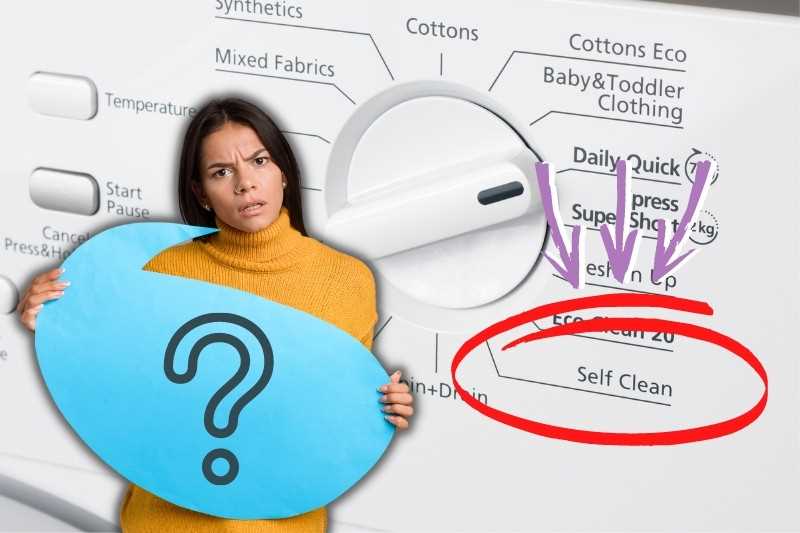
Once the drum is empty and the appropriate cleaning agents have been added, start the clean cycle. This cycle typically runs for a longer duration than a regular wash cycle and may include additional rinses to ensure thorough cleaning.
Step 5: Wipe Down the Exterior
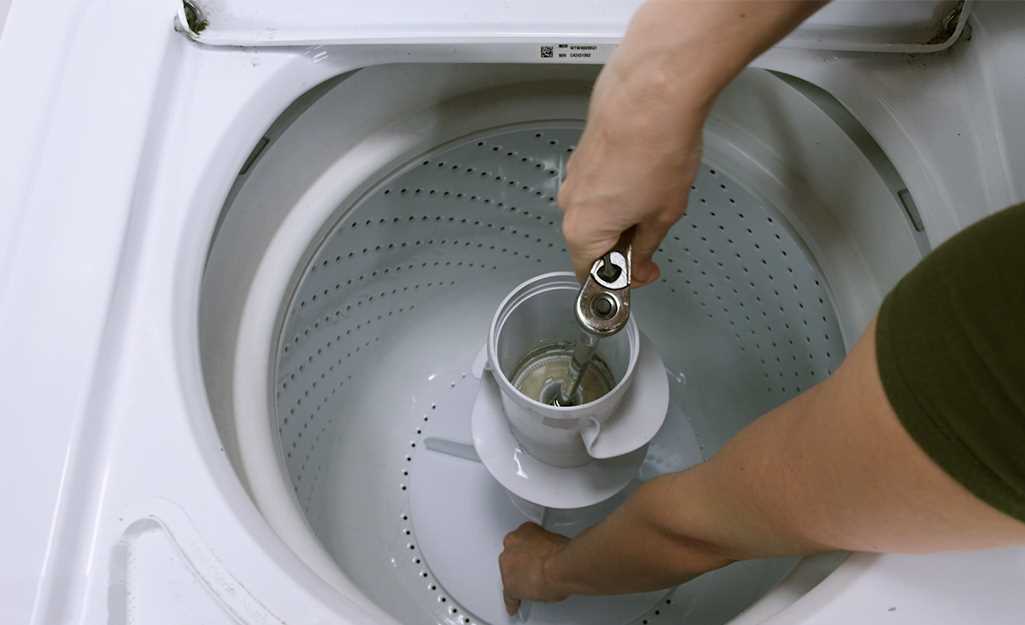
While the clean cycle is running, take the opportunity to wipe down the exterior of the washing machine. Use a damp cloth to remove any dirt or grime that has accumulated on the surface. Pay special attention to areas around the control panel and door.
Step 6: Clean the Dispenser Drawer
After the clean cycle has finished, remove the dispenser drawer if possible and clean it thoroughly. Use warm soapy water and a brush to remove any detergent residue or buildup. Rinse the drawer and dry it completely before reinserting it into the machine.
Step 7: Keep the Door Open
After running the clean cycle, it is recommended to keep the door of the washing machine open for a while to allow the drum to air dry. This helps prevent the growth of mold and mildew inside the machine.
Step 8: Repeat Regularly
To maintain a clean washing machine, it is advisable to run a clean cycle every few months or as recommended by the manufacturer. This helps prevent the accumulation of dirt and bacteria, and ensures optimal performance of the machine.
By following these steps and regularly running a clean cycle, you can keep your washing machine clean and running smoothly for years to come.
FAQ
Why should I run a clean cycle on my washing machine?
Running a clean cycle on your washing machine helps to remove any build-up of dirt, detergent residue, and other contaminants that can accumulate over time. This improves the performance and efficiency of your machine and helps to prevent odours and mould growth.
How often should I run a clean cycle on my washing machine?
It is recommended to run a clean cycle on your washing machine every 2-3 months, or more frequently if you have hard water or use your machine frequently. Regular cleaning helps to prevent the build-up of residues and keeps your washing machine in good working condition.
What is the best way to run a clean cycle on my washing machine?
To run a clean cycle on your washing machine, start by checking the manufacturer’s instructions for your specific model. Typically, you will need to add a washing machine cleaner or a mixture of baking soda and vinegar to the drum, then run a hot water cycle. After the cycle is complete, wipe down the drum, door, and gasket with a clean cloth.
Can I use regular detergent to clean my washing machine?
No, it is not recommended to use regular detergent to clean your washing machine. Regular detergents are designed for use in the wash cycle and may not effectively remove built-up residue and debris from the machine. It is best to use a washing machine cleaner or a mixture of baking soda and vinegar for optimal cleaning.
What are some signs that my washing machine needs a clean cycle?
Some signs that your washing machine may need a clean cycle include a musty or unpleasant odour coming from the machine, visible mould or mildew inside the drum or gasket, clothes not coming out as clean as they should, or the machine not draining properly. If you notice any of these signs, it’s time to run a clean cycle.
Why is it important to run a clean cycle on a washing machine?
Running a clean cycle on your washing machine is important because it helps remove built-up residue, odors, and bacteria that can accumulate over time. This not only improves the performance of the machine but also ensures that your clothes are being cleaned effectively.












